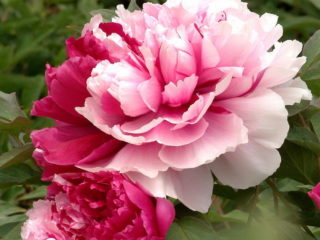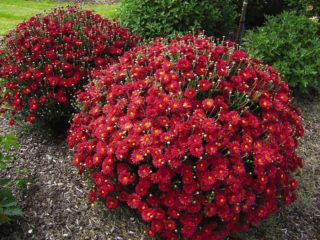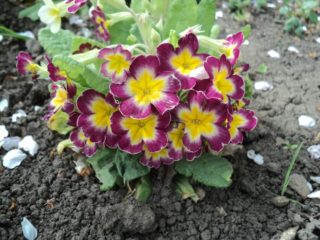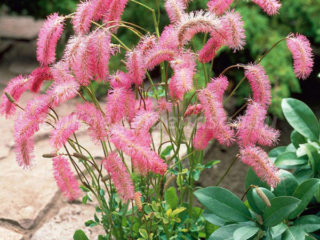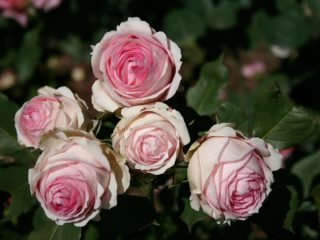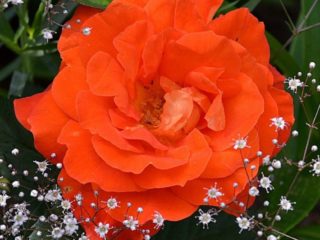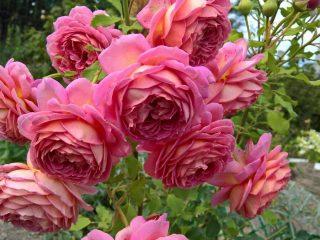Content
Peony Cora Stubs is a neat terry variety. It does not cause problems in cultivation and adapts to almost any conditions. High decorativeness, disease resistance and frost resistance have made peony very popular. It is cultivated in Canada, the USA, Germany, Austria, Thailand, China, Japan and Russia.
History of appearance
Bark Stubs was obtained by scientist William Crackley. Year of breeding: 1985. Peony is a hybrid.
Description of peony Cora Stubs with photo
The first thing that catches your eye is the flowers of Cora Stubs. The diameter of one bud is 16-18 cm. The inflorescences are double, relatively symmetrical and neat. Available in two colors: the outer petals are bright pink, the inner petals are beige.
Initially, the bud has a purple color; as it is exposed to the sun, some of the petals become creamy. The outer circle of the petals has pronounced symmetry, while the inner circle is more chaotic in structure.
Peony Cora Stubs is a perennial herbaceous shrub covered with dense foliage. The stems have flat green plates. Hidden underground is the powerful root of the plant, which has a spindle-shaped shape.

The average height of a peony is 85 cm: it can be grown in the front garden, in the garden or at home
The advantage of the Cora Stabs variety over others is its powerful stems that do not require garter. They do not sag even under the weight of opened inflorescences. The bushes retain their decorative appearance throughout the year; this is not affected by either wind or precipitation (although their impact should be reduced to achieve the best flowering).
The crop is recommended for cultivation in the northern regions of Russia. This is due to good frost resistance: the peony Cora Stubs safely survives frosts below -35 degrees. However, if the temperature drops beyond -40 degrees, the plant needs shelter.
Timing and duration of flowering
Buds appear in the last month of spring, sometimes at the beginning of summer. The time depends on the climatic conditions of the region, including the weather forecast. The duration of flowering is characterized as average, lasting from 10 to 24 days. Often the buds last until early July.
When planting a developed seedling of Cora Stubs, the first flowering can be expected as early as next year. Cuttings enter this phase much later - after 4-5 years.
Advantages and disadvantages
Peony Cora Stubs is a frost-resistant variety. It can be grown in different regions without fear of the plant getting sick in the cold winter.

Flowers have a distinct scent that attracts beneficial insects
Pros:
- early and fairly long flowering;
- good resistance to diseases and pests;
- low demands on planting and growing conditions;
- cut stems stand in water for a long time;
- resistance to short-term drought;
- unusual appearance.
Minuses:
- burning of flowers in the sun.
Landing scheme and rules
Bark Stubs are planted according to the same rules as other varieties of peonies. A perennial needs a good place in which it will spend most of its life. It is advisable to do without transplants, because the plant does not like it. The herbaceous peony needs a bright place (partial shade is allowed) with good soil - drained, fertile and loose.
The acidity of the soil should be neutral; in such conditions, more luxuriant flowering is observed. Typically, Cora Stubs is grown in loamy substrates. The soil is prepared several weeks before planting: a hole 60 x 60 cm is dug, compost and sand are added, and it is buried.
While the soil is absorbing nutrients, it’s time to choose a quality seedling. Conduct a thorough inspection of the material, identifying:
- cracks;
- growths;
- spots;
- slices;
- traces of rot;
- bad smell.
In addition, only those specimens that have:
- shoots longer than 18 cm;
- from 3 to 5 viable buds;
- healthy root system.
Planting of the Cora Stubs peony begins in the fall, at the beginning of the season. The rhizome is placed in the center of the prepared hole, covered with a nutrient mixture (prepared in advance), the substrate is compacted and watered.
How to care
While the seedling is young, pruning is not required.Upon reaching 2-3 years, dried shoots and flowers are removed. The cut is made 2 cm above the kidney. With the help of pruning, you can rejuvenate old peonies: you need to cut off the branches located at a height of 35 cm, over time they will renew themselves, and Cora Stubs will become lush again.
Fertilizing is applied twice - during the growing season and at its end. For the first time, organic matter (compost, rotted manure) is suitable. If you have nowhere to get fertilizers, you can buy them at the store.

It is better to pay attention to manure supplied in granules - it dissolves faster
You can't completely give up minerals. Potassium and phosphorus are vital for the perennial, but you need to remain vigilant with nitrogen: frequent application will cause the Cora Stubs peony to form a green mass rather than flowers.
To direct flowering, a single dose of fertilizing is sufficient. This is done in March or April. It is recommended to fertilize depleted substrates as often as possible, optimally every month. After flowering, the fertilizing course is completed and resumed only in September.
Then you can mulch the Cora Stubs peony. This measure is needed to prevent the development of weeds, which grow very well after applying fertilizers.
Preparing for winter
Young Cora Stubs peonies are spudded with garden soil or rotted manure. You should not use a full-fledged shelter - this accelerates the development of buds in the spring.
Reproduction methods
To propagate the Cora Stubs peony, you need high-quality planting material. An adult plant can be obtained from seeds and cuttings, but the process is labor-intensive.
There is another way - dividing the rhizome. It is accessible to both professionals and beginners.A crop aged 3 years and older is required, the underground part of which is well developed. It is best to divide the roots at the end of August.
When the Cora Stubs peony is buried, it will need to be thoroughly moistened and mulched with compost (which will also serve as fertilizer). After the sprouts appear, the mulch is removed and the root zone is dug up.
Disease and pest control
Peony Cora Stubs can become infected with gray mold. The symptom of the disease is light brown or gray formations. If detected, treat the plant with a fungicide. A weekly interval is maintained between sprayings.
Application in landscape

Green peony leaves go well with conifers and tall shrubs

The crop is often planted along paths

The plant can be grown next to other peonies to achieve contrast or create emphasis on certain varieties
Conclusion
Cora Stubs is an interesting peony, bred in 1985. It has all the qualities necessary for cultivation in Russia: frost resistance, pickiness, resistance to diseases and insects.
Reviews from flower growers about peony Cora Stubs
